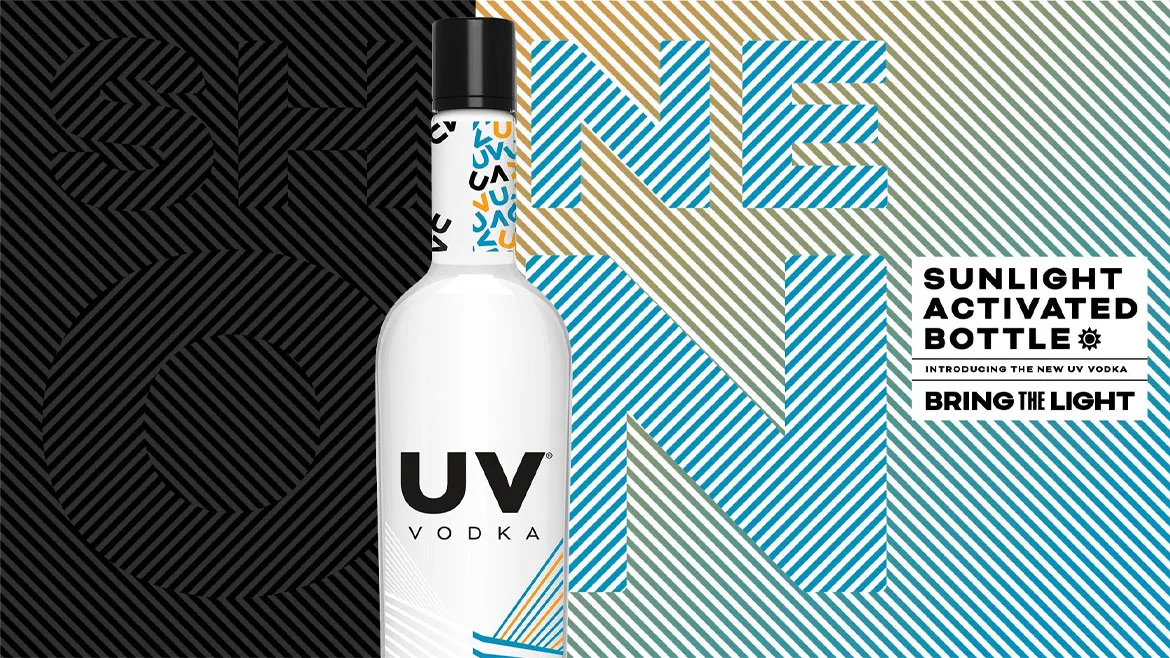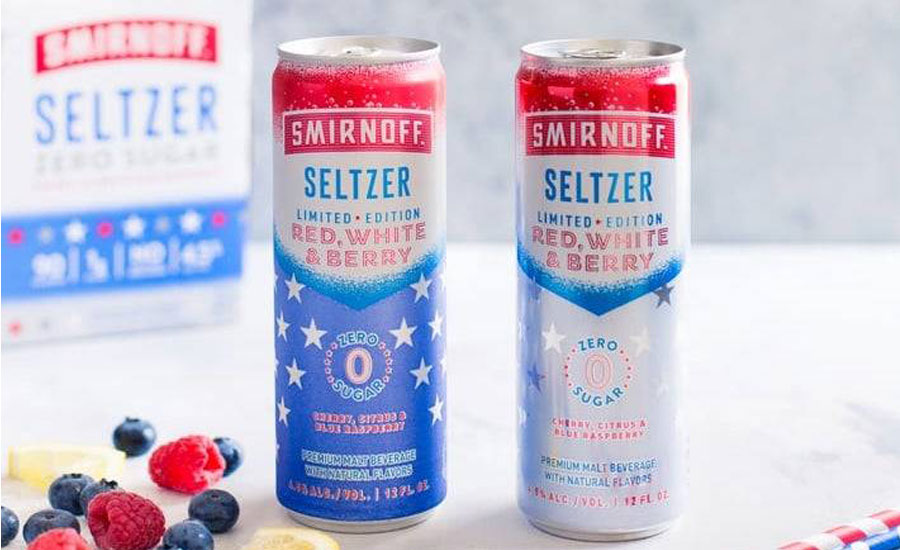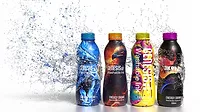Packaging Materials
Inks, coatings technology allows product to speak to consumer
Thermochromic, photochromic inks help brands elevate packaging

Image courtesy of Phillips Distilling Co.
In the 2012 hit “Pontoon,” country music group Little Big Town sings about a day spent having fun out on the water. In the second verse of the song, the group sings: “Reach your hand down into the cooler / Don’t drink it if the mountains aren’t blue.” Although many instantly know the beer company being referenced in the song, they might not understand the technology behind what makes the mountains blue on the can.
In the beverage industry, packaging talks.
That’s what Daniel Wachter, chief commercial officer at Colorado Springs, Colo.-based Chromatic Technologies Inc. (CTI), says. CTI’s technology was used to create the iconic blue mountains on Coors Light cans “telling” consumers when the beverage was at an ideal temperature for enjoyment.
Current trends in the industry aren’t only impacting which beverages are popular, but also influencing the inks and coatings market when it comes to beverage packaging.
Trends such as “premiumization, consumer engagement, designs that allow scanning by smartphones for further information and for gaming, sustainability and recycling,” are influencing consumers’ purchasing decisions, Wachter says.
Alex Folloso, director of metal decorating technology for INX International Ink Co., Schaumburg, Ill., also notes that sustainability trends are impacting the beverage packaging market.
“Consumers are becoming more interested with the sustainability of the product they purchase,” he says. “Metal cans are the most recycled package, and consumers are aware of it. Brands are moving more of their product to metal packages to give consumers a more recyclable option.”
Embracing innovation
Beverage-makers can utilize the latest inks and coatings innovations, such as thermochromic and photochromic, to benefit their brands.
CTI’s Wachter explains how the company can help beverage brands.
“Beverage-makers and beverage brand owners choose CTI’s printable chromatic technologies on their packaging because the unique consumer engagement, which is enabled and triggered by our technologies, is customizable to visually prove their specific brand promise,” he says. “This way, we help brands to differentiate in highly competitive market segments. Additionally, consumer research and numerous successfully commercialized applications prove that such an enhanced brand engagement increases purchase intent and, ultimately, generates sales lift for both our brand-owner- and converter- and printer customers.”
In a recent advertising campaign, CTI asks “What’s your blue mountain?” It teases the question about what makes other brands unique and shows that the company’s technology can be used to enhance a brand’s individuality.
INX’s Folloso also highlights this technology.

Image courtesy of Smirnoff
“Beverage-makers such as Monster Energy and Miller Coors utilize tactile and thermochromic effects to differentiate themselves from other brands,” he says. “Tactile inks and coatings provide a textured feel; thermochromic inks change color when a room temperature can is exposed to the cold.”
Despite the growing popularity of these ink solutions, some modernizations in inks and coatings aren’t as widely used as others.
“Beverage-makers may not be aware of the INX Color Perfection products we offer,” Folloso notes. “The INX Color Catalog contains over 600 color swatches that are actual representations of how a specific color will look on an aluminum beverage can. We also offer direct-to-can proofing or printed film that can be wrapped around the can. This provides beverage makers with ways to visualize different label designs.”
CTI’s Wachter also suggests that there are many other ways the beverage industry can take advantage of various inks and coatings technologies.
“Beverage-makers take benefit from our entire chromatic ink technology portfolio, paired with new and innovative applications and artwork/design concepts, message-hiding techniques, as well as novel hybrid thermos- and photochromic ink technology versions, which combine the benefits of both technologies (i.e., cold-activation indoors changes colors again when taken outdoors through additional sun activation),” he explains.
Another example of CTI’s thermochromic technology was on the cans for Smirnoff’s Zero Sugar Red, White and Berry Seltzer. The red, white and blue cans display silver stars when the cans are cold. Additionally, CTI’s photochromic technology was used to sun-activate labels on Phillips Distilling Co.’s UV Vodka to display a bright spectrum of colors.
“To support beverage-makers’ sustainability initiatives, and for helping increase overall recycling rates, which are dramatically low, especially in the U.S., a novel thermochromic reveal technology can be applied to activate a specific post-consumption recycling message to put consumers’ attention toward the recyclability of the beverage container after enjoying the before-cooled beverage, which stimulates the recycling behavior,” Wachter says.
In addition to sustainability and customization, Wachter notes that the most common requests by manufacturers include vibrant colors, consistency and scalability in printing/coating as well as cost efficiency.
He expects these requests for customization and optimized printing will continue for beverage-makers. Meanwhile, chromatic technologies becoming inkjetable will broaden its applications, Wachter adds.
INX’s Folloso notes that regulatory reviews important to brand owners now and will continue to influence the industry.
“Regulatory reviews of our inks is the most common request,” says INX’s Folloso. “On average, our EHS group receives one or two requests a week from can-makers or brand owners.”
Going forward, inks and coatings are sure to innovate to keep up with the demands with today’s and tomorrow’s beverage-makers.
Looking for a reprint of this article?
From high-res PDFs to custom plaques, order your copy today!







